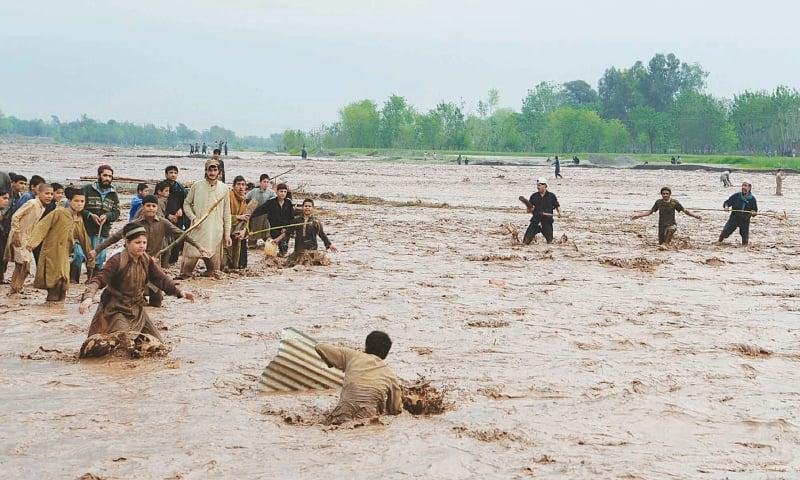Pakistan estimates the damage at $30 billion, and both the government and Guterres have blamed the flooding on climate change. Image: NASA
Pakistan Recent Flood and Climate Change
By Adnan Tipu
In 2010, Pakistan was hit with extreme flooding in its northern part of the country, which resulted in the loss of 1,985 lives and over US$ 10 billion in damages and caused 15$ billion to the economy. Failure to respond timely and rehabilitation of affectees raised few very serious questions about handling such situations in future if faced by the country. At that moment the federal government vowed to increase capacity and response mechanisms but no concrete steps were adopted.
During the end of June 22, National Disaster Management Authority (NDMA) in Pakistan issued an alert at national level about extensive heavy rain pours during monsoon. However, government and other national agencies failed to recognise its severity, until the failure of timely response by local authorities, the lack of capacity due to inadequate flood management infrastructure caused massive damage to the national economy and populace.
This unprecedented level of monsoon which is believed to be occured, as a result of extreme climate change caused rainfall over nine times than the average annual rainfall in the southeastern Sindh province and other parts of the southern region. This human induced climate change resulting in an environmental disaster is considered to be the worst environmental disaster in the world in the current century, leaving one-third of the country under water. Over 1,400 people have died and more than 33 million have been impacted by this disaster. Pakistan has estimated that this climate disaster has caused over $30 billion to the country’s economy. Estimation of damages is feared to increase once the situation is stabilised. The situation is more severe due to poor management capacity of public office holders, stalled economy and constant climate change occurring in the region.
The response required to recover from this disaster is apparently beyond the capacity of various agencies in Pakistan and the country has asked help from other countries. This support required is in the shape of financial resourcing, technical assistance and human capacity building.
Pakistan needs to learn a lesson from 2010 and the current situation to generate a better response to avoid such disasters in future. Grassroot level organisations involving communities and local authorities are required to generate effective response mechanisms and react in a reasonable time frame can support timely evacuation from flooded areas and humanitarian assistance. Moreover, at national level it needs to enhance its water management infrastructure to manage excess water during flooding events and help with droughts in dry years, through construction of new dams, water reservoirs and barrages. At international level Pakistan is clearly on the front lines of climate change and requires more support from the international community to cope with the challenge.

